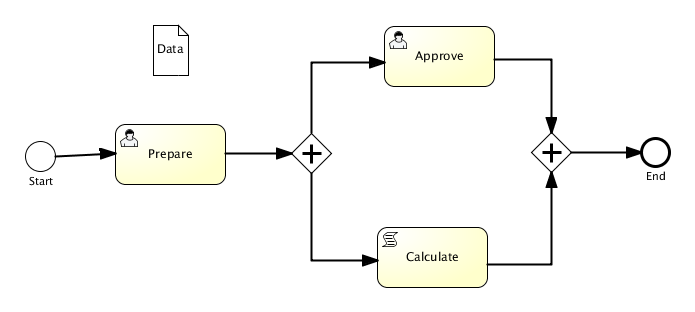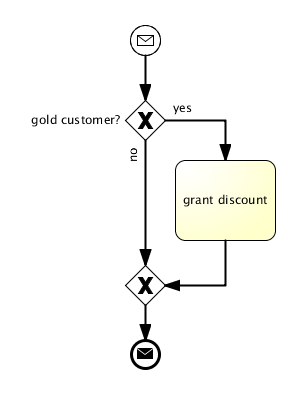I have been using the Enterprise Architect modeling tool for many projects. I like the tool especially due to its quick modeling capabilities and productivity. Therefore is ideal for workshops with participants from IT and business. Performing live modeling together with the domain experts is a very efficient approach to gather accurate information related to processes and IT systems.
So I am very pleased to see that Enterprise Architect 9 now supports the creation of BPMN 2.0 models as well. And even better, models can be easily exported in form of BPMN 2.0 interchange format via Project – Model Publisher in the Enterprise Architect menubar (by the way, import is not possible. :-().
Anyway, I gave it a try and exported a simple model from EA:
To prove that the interchange works, I imported the model in my favorite BPMN tool the Signavio Modeler. This is the result:
That’s not too bad, is it? But it seems that some model details are missing. The dataInputAssociation and dataOutputAssociation, the scriptFormat and the groovy script attached to the ScriptTask were not imported.
It seems that (at least for those two tools) BPMN2.0 model interchange is not yet sufficiently possible.
Update:
I imported the bpmn file into the Activiti Designer Eclipse Plugin version 5.7.1 as you can see below:

The Groovy script was successfully imported, but the dataInputAssociation and dataOutputAssociation was not recognized and therefore removed from the process definition. The original file is solely used for the import. After importing an *.activiti file is created and used as THE model. On saving the model, a fresh BPMN XML file is generated. That is, you loose control over the file at the XML level. I personally don’t like this, as I think executable BPMN files should be treated as source code and need to be fully controlled by developers. A designer tool can help, as long as it does not destroy the orginal source files.
Summary so far:
Sparx Enterprise Architect – Comprehensive modeling, good export, no import
Signavio Modeler – Comprehensive modeling, good export, incomplete import
Activiti Designer – Limited modeling, good export, incomplete import
None of the tools has sound reverse engineering or roundtrip capabilities yet.
For descriptive (level 1) and analytical (level 2) modeling Sparx Enterprise Architect and Signavio Modeler are great.
For executable modeling (level 3) a plain XML editor seems to be the only reasonable option for the time being.


